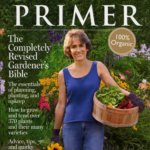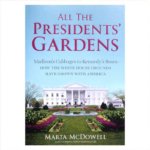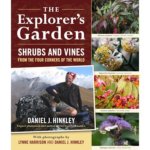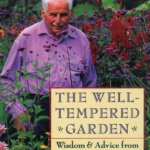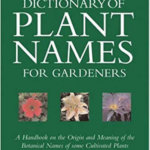Gardening reading to carry through to spring
While there is still plenty of winter left and days by the fire go on, I’d like to suggest some reading inspiration for you. I hope to revisit many of the books and magazines my garden has benefited from over the years. Sometimes catalogues are good reading as well.
In the early years, the subject was often “how-to.” Then as I progressed in ability and knowledge, reading material turned to personalities, famous gardens and history of plants. Some of these offerings may be out of print, but I’ve been able to find them quite often from Amazon, as used. They are worth searching.
Often I am asked to suggest a perfect beginner book for someone as a gift. My favorite is Barbara Damrosch’s Garden Primer. It is filled with all manner of basic information on growing flowers and vegetables. I believe this one has recently been reissued and updated. She and her husband, Eliot Coleman, grow year round (in Maine!), so if this interests you, there might be hints.
For native wildflowers, I like William Cullina’s Growing and Propagating Wildflowers. On propagating of all sorts, Ken Druse has a book called Making More Plants. All of Druse’s books are good reliable reads. For reference I often turned to Taylor’s Master Guide to Gardening, The National Arboretum Book of Outstanding Garden Plants, Dirr’s Hardy Trees and Shrubs, and When Perennials Bloom by Tomasz Anisko. Martha Stewart’s Gardening is a feast for the eyes and offers good info too.
Joe Eck and Wayne Winterrowd have written, together and individually, books that I have enjoyed immensely. A few are more memoir but still offer tidbits of advice in a comfortable way. Their garden is in Readsboro Vermont. Winterrowd passed away a few years ago. He wrote about annuals, perennials and roses. Eck wrote about garden design. Together they wrote about their life together while making a garden called North Hill.
Another author, who was new to me at the time but will appeal to historians, is Andrea Wulf. Her titles are The Founding Gardeners (Washington, Adams, Jefferson and Madison) and The Brother Gardeners, both with early American backgrounds (1700s). Another historical book I enjoyed was All the Presidents’ Gardens about various White House plantings through the years.
Daniel Hinkley is an intelligent plant explorer and breeder. His adventures have introduced many plants to American gardens. His two The Explorer’s Garden books deal with perennials and shrubs, trees and vines. Allen Armitage, of the University of Georgia writes with authority as well. I have turned to his Specialty Cut Flowers often. If you like making bouquets and growing plants for them, this will be helpful.
A delightful array of books was authored by Christopher Lloyd of Great Dixter in England. He wrote of the historic gardens that he nurtured for his whole life. “Christo” was known as an imp and flamboyant gardener. He tried tropicals and mixing colors that were not usually associated with each other, and he had strong opinions too! A few of his titles are The Well-Tempered Garden, The Year at Great Dixter, Succession Planting For Year-round Pleasure and Meadows.
Have you ever wondered how some plants got their names? Well, Who Does Your Garden Grow? and and Plant Names For Gardeners will answer those questions. The former is by Alex Pankhurst and the latter by William T. Stearn.
There are so many good books out there! I will leave off here. Perhaps in another column we’ll get to magazines and catalogues. Timber Press can generally be counted on as the go-to publisher of the best garden books. I hope you’ll discover a new gardening friend in print. I know I have.

